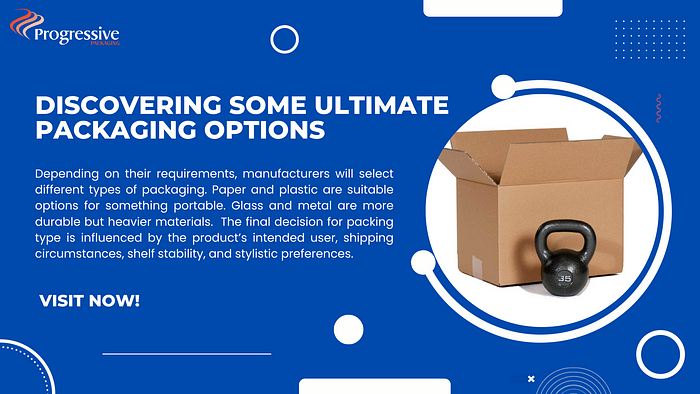Discovering Some Ultimate Packaging Options

Some Popular Packaging Options
Paper
This packing is made of pulp from wood or other materials, including hemp or bamboo. It is frequently employed by manufacturers such as Stock Boxes Texas, Double Wall Boxes, wrappers, paper boxes, shredded packaging material, or paperboard. Two or more layers of paper are adhered together to form corrugated boxes.
Paper can be a sustainable solution for packaging because it is 100% recyclable. Although using wood is less environmentally friendly, several cutting-edge options have a lower carbon footprint. For instance, bamboo grows swiftly and resurfaces after being cut down.
Plastic
The primary component of this synthetic substance is a polymer. Plastic can be stiff or flexible when it comes to packaging, as in the case of bottles, jars, and tubs that carry foods, drinks, detergents, medications, and other items. Flexible plastic is used for Poly bag packaging, wrappers, stickers, and Clear Pallet Covers. Other forms of packaging, such as bubble wrap or packing peanuts, also contain plastic. Carton Sealing Tape and Wholesale Stretch Wrap are also made of plastic.
Multi- Materials
Multi-material packaging, often known as multi-layer packaging, is precisely what it sounds like a combination of many material kinds. For instance, juice boxes are constructed from polyethylene, aluminum, and paper layers. Paper by itself cannot tolerate being wet; thus, fertilizers and cement may be packaged in a structure comprised of paper and plastic.
Multi-material packaging, like a metalized plastic bag that keeps potato chips crisp, can be designed to protect items from moisture.
Metal
Mining and refining raw minerals from the soil are the two steps involved in creating aluminum, steel, and other types of metal packaging. Metal has the potential to be stronger than Glass or plastic, yet thin metal is frequently malleable and susceptible to bending.
Manufacturers use metal cans to package various goods, including soda, green beans, paint, and shoe polish. Food can be kept for a more extended period because metal can stop it from deteriorating. Large volumes of liquids, like oil, are also transported in steel barrels for commercial usage.
Glass
Glass is a nonporous, nontoxic, indefinitely recyclable substance made of sand. Its breakability is one of its drawbacks; glass products may break while transported, costing the maker money in lost goods and labor spent cleaning up. Additionally, it weighs more than plastic and produces a lot of heat.
Conclusion
The packaging helps set the product apart from others and promotes customer recognition of the goods. It also shields the goods from harm, in addition to the other benefits. So, ask the seller to pack any product you buy from the market. For more information visit our website:- https://www.progressivepp.com/


Comments
Post a Comment